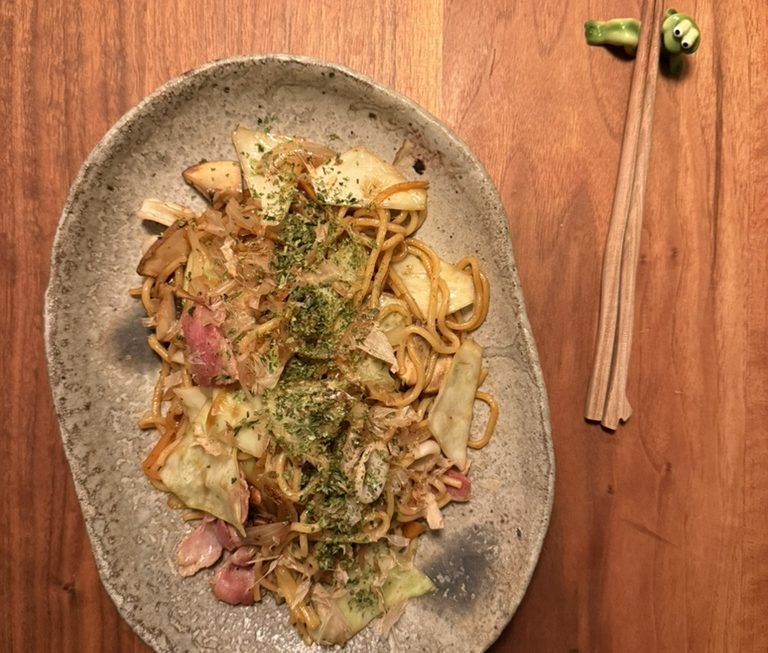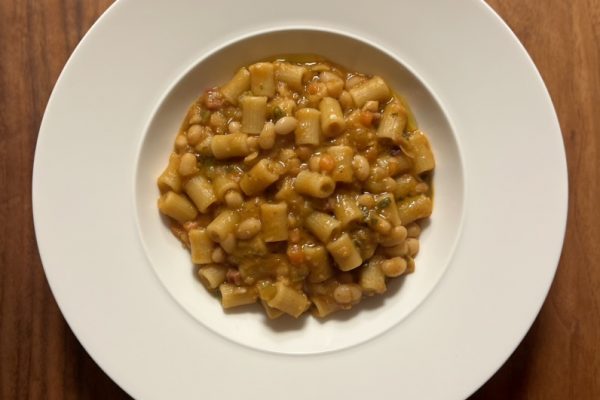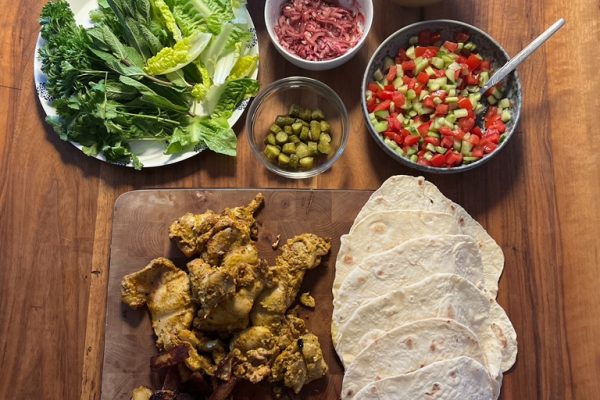Yakisoba is not an old dish, but became popular after the Second World War when inexpensive, filling meals were urgently needed. It is related to chow mein from China and mie goreng from Indonesia. Literally translated, yakisoba means ‘fried noodles’, although Japanese soba actually refers to buckwheat noodles. However, this is misleading in the case of this dish, as soba noodles are often eaten cold or at least not fried as they are here. The noodles used for yakisoba, on the other hand, are wheat noodles, similar to Chinese mie noodles, but thicker.
These noodles can be bought ready to use if you have an Asian market nearby. Alternatively, you can use fresh ramen noodles. If neither of these are available, dried ramen noodles are a good alternative. Or you can use thick spaghetti, such as spaghettoni, linguine or bucatini, and cook them in water to which you add a spoonful of baking soda (sodium bicarbonate) in addition to salt, which makes the water alkaline and gives the noodles a firmer bite.
The ‘fresh’ noodles for yakisoba are vacuum-packed and therefore stick together. Regardless of what it says on the packet, unpack them, place them in a small saucepan and pour a little boiling water over them. After a minute, you can stir the noodles with chopsticks to loosen them slightly.
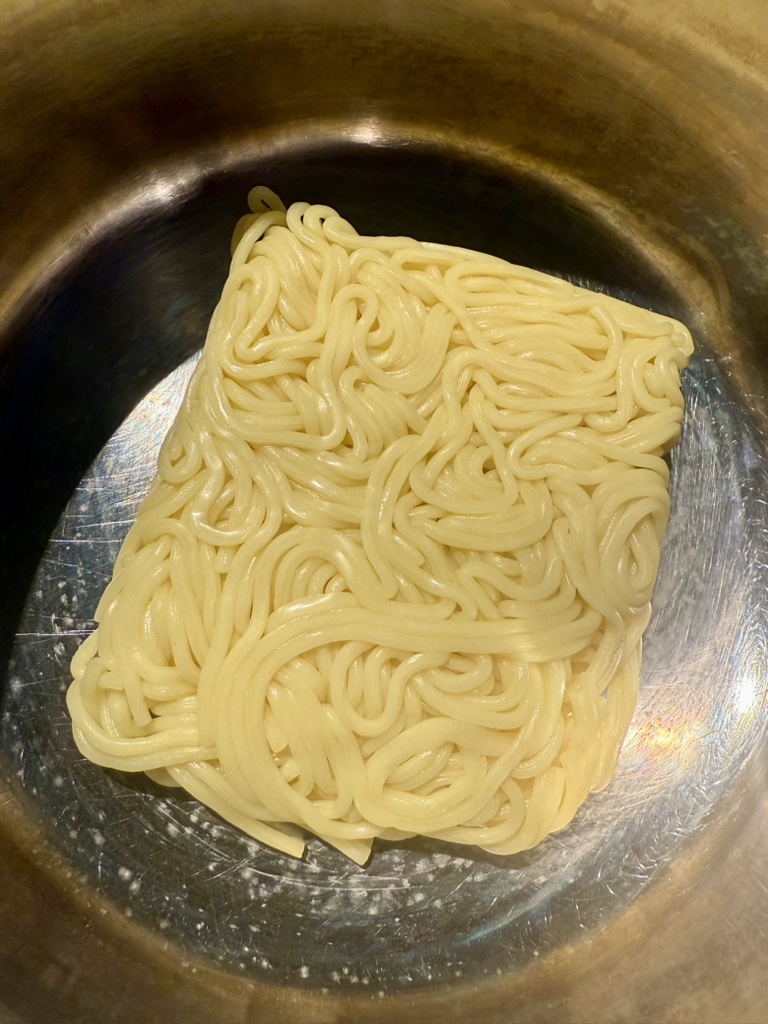
Other classic ingredients include white cabbage (or napa cabbage), onions and thinly sliced pork belly (or what is often sold as bacon). For a simple version of yakisoba, you could leave it at that.
However, carrots and/or mushrooms also go very well with it; there are no fixed rules, so these are just suggestions. In Japan, we had delicious variations with squid, in the form of small sepia, so we also add these to the dish.
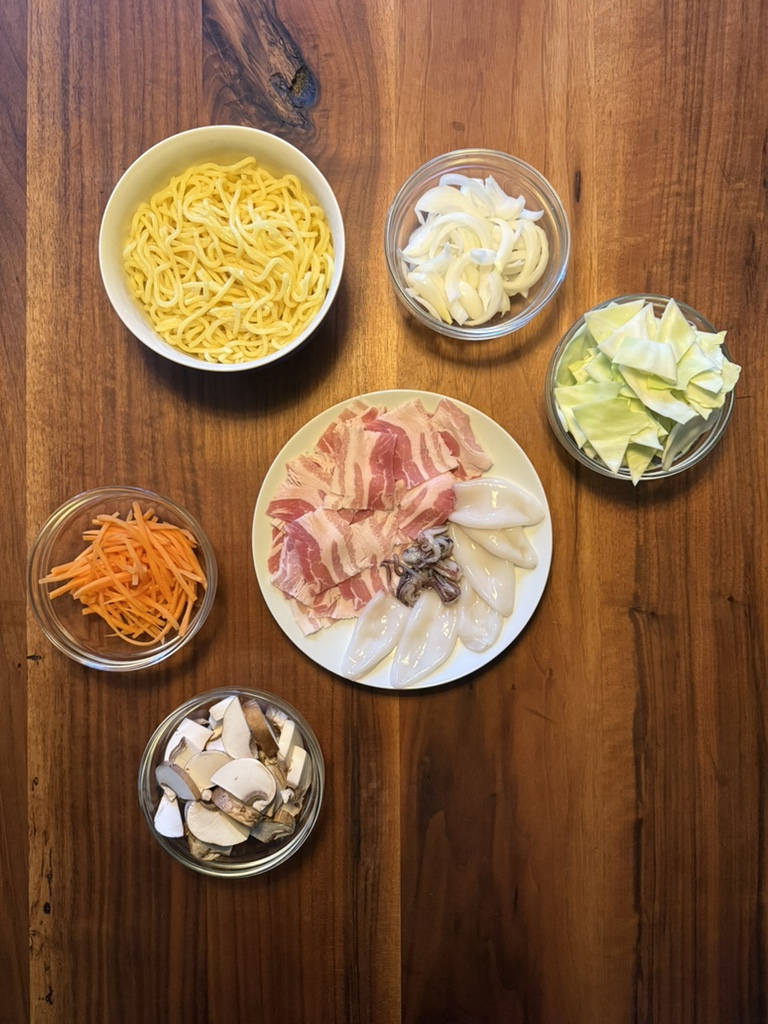
Cabbage leaves are cut into 2–3 cm pieces, onions into strips that are not too thin. We like to cut carrots into fine stripes, mushrooms into thicker slices. We separate cuttlefish into tubes and arms. We leave the latter as they are and cut the tubes into wider rings. If you have never prepared squid before, here is a perfect explanation of how to do so (for slightly larger specimens).
The last and most important element of this dish is yakisoba sauce.
You can buy it, and the most popular product worldwide is probably the one from Otafuku, but Kikkoman also has something on offer.
However, you can also easily make yakisoba sauce yourself by mixing soy sauce, oyster sauce, sake, mirin, tomato ketchup, Worcestershire sauce and sesame oil. As always, you can find the exact ingredients at the end of this article. Feel free to experiment and create your own favourite mixture!
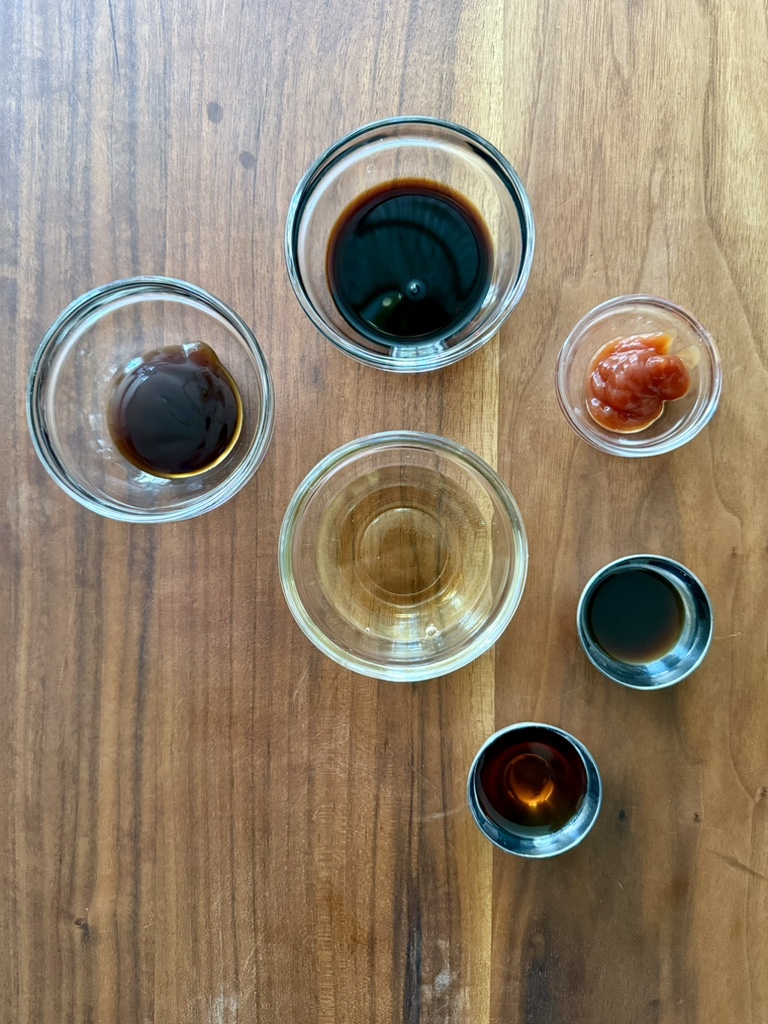
After these preparations, it’s time for ‘yaki’, in other words, frying. A large non-stick pan is better suited for this than a wok. In Japan, this is a popular street food and is usually prepared in large portions on a teppanyaki griddle.
First, fry the drained noodles in a little neutral vegetable oil over medium-high heat. They should become slightly crispy so that they retain their bite even when coated in sauce.
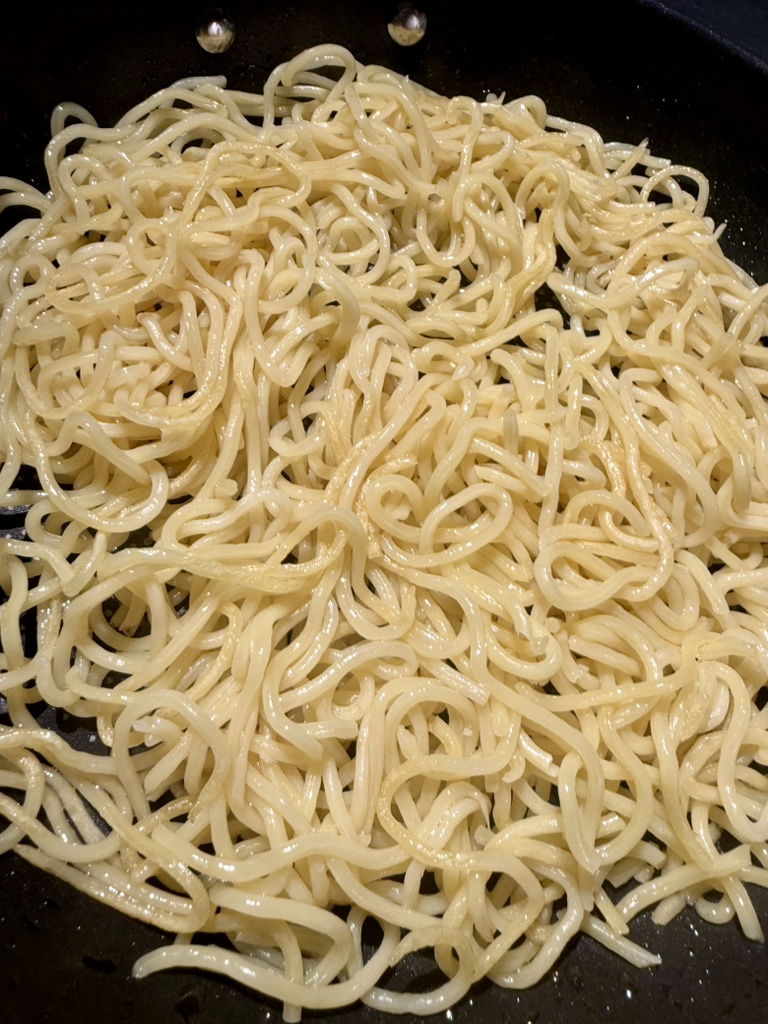
Set the noodles aside and fry bacon. It should not be crispy, just rendered of its fat.
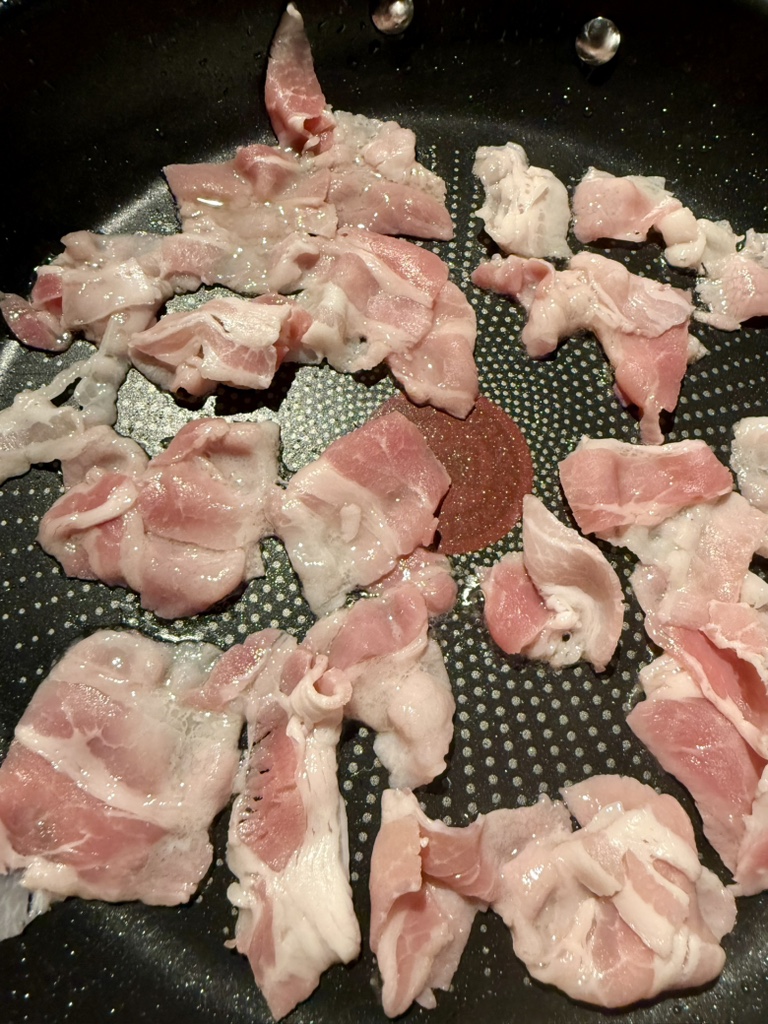
Then add sepia, if using. Fry both together for about 3 minutes and then set aside.
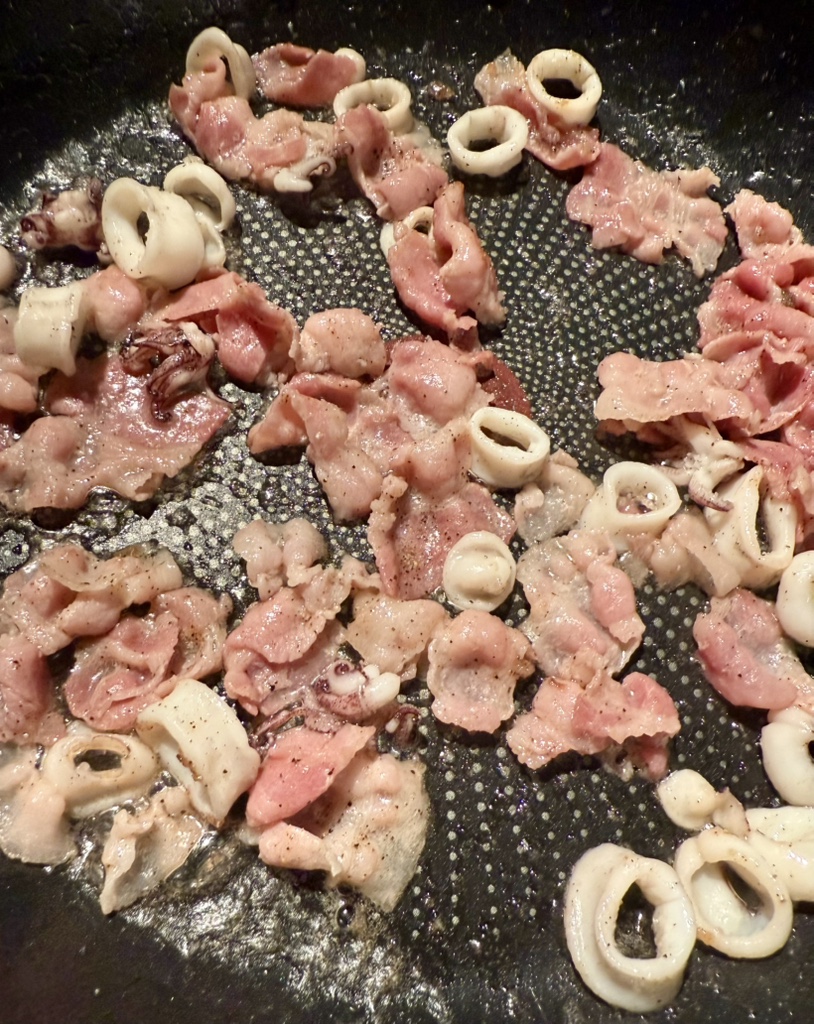
Now it’s time for the vegetables. Depending on what you want to use, you should proceed in order of cooking time, starting with the firmest and ending with the softest vegetables. Our mix of cabbage, onion, carrot and mushrooms can be fried in one go, stirring until everything has taken on a little colour but is still crunchy.
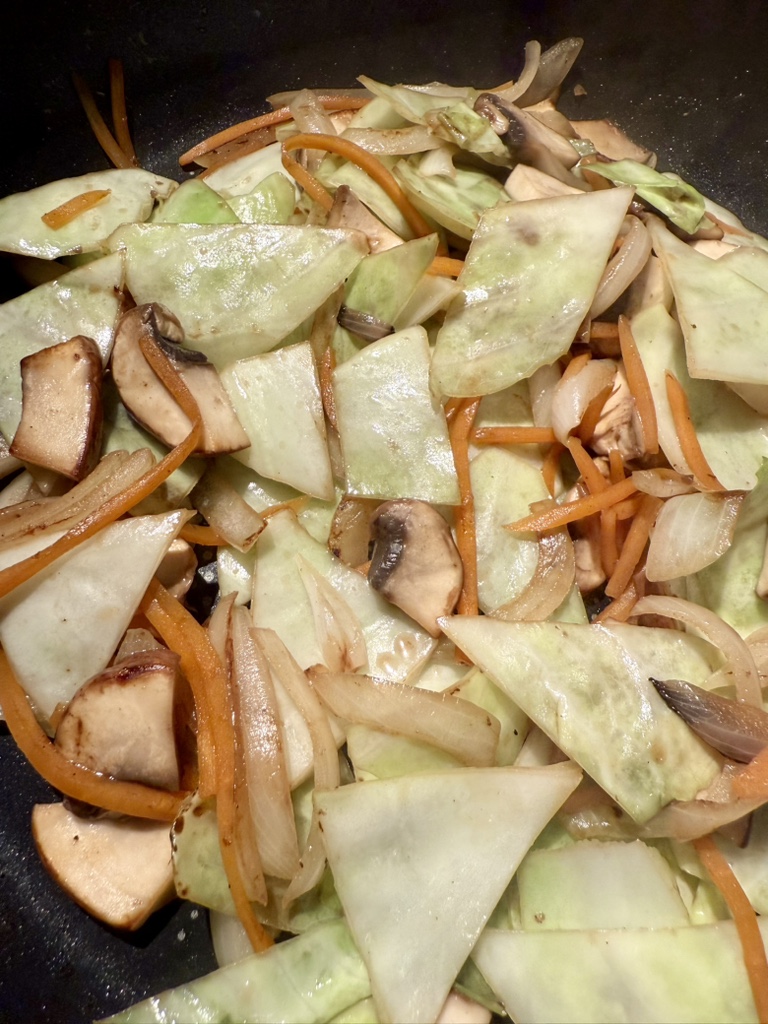
The vegetables are also set aside, then it’s back to the noodles, which are poured over with the yakisoba sauce and stir-fried for one minute.
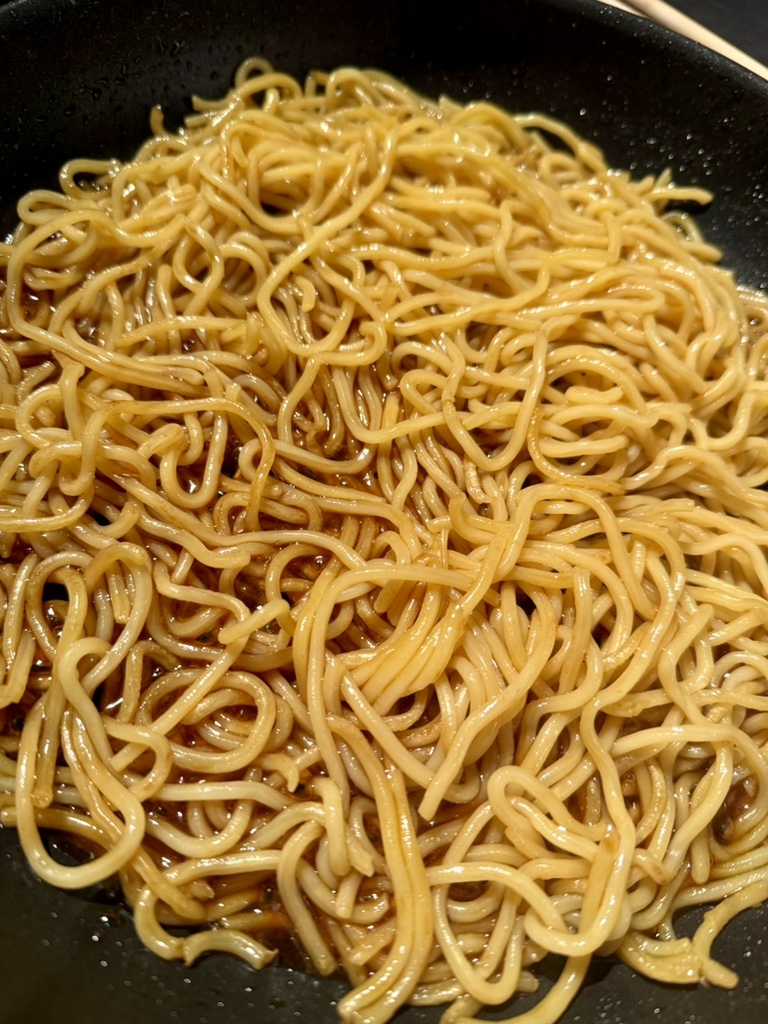
Then return all the remaining ingredients to the pan and fry for another two minutes to coat them with the sauce and warm them through. However, they should not boil or steam in the sauce, so this should be a very quick process.
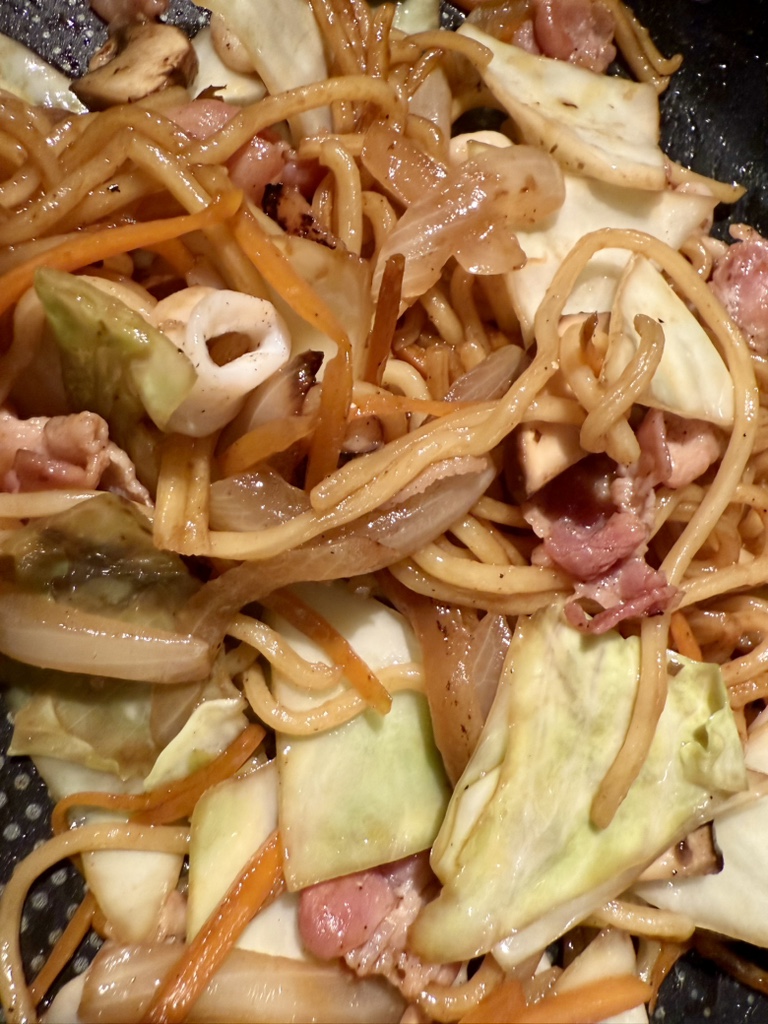
Now it’s all ready to plate up. Yakisoba is usually served with toppings like katsuobushi (dried bonito flakes), aonori (finely ground dried seaweed) and/or beni shoga (pickled ginger). Some people even add Japanese mayonnaise as a topping, but we’d personally skip that.
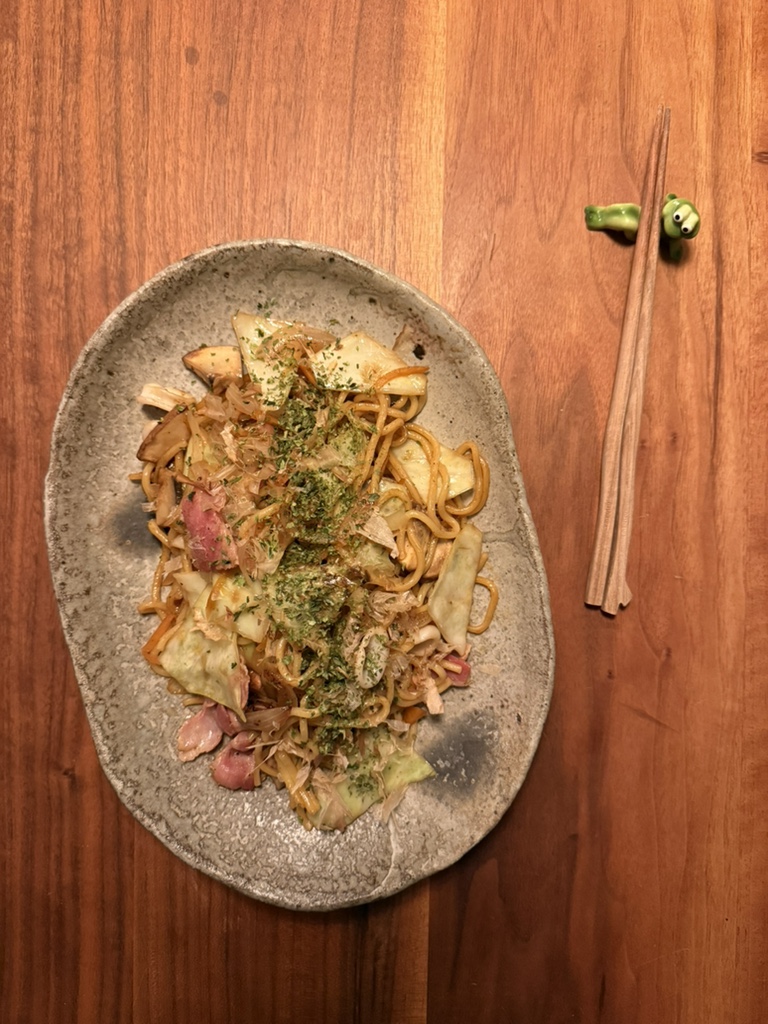
いただきます – Itadakimasu!
And may the taste be with you.
Ingredients (for 2 people):
Yakisoba sauce:
1 tbsp soy sauce
1 tbsp oyster sauce
½ tbsp sake
½ tbsp mirin
1 tsp tomato ketchup
½ tbsp Worcestershire sauce
1 tsp sesame oil
Yakisoba:
300 g yakisoba noodles (pre-cooked) – alternatively: ramen noodles
1 tbsp neutral vegetable oil
100 g thinly sliced pork belly (bacon)
100 g small squid (or more pork belly or fried chicken)
A small amount of white cabbage, onion, carrot, mushrooms and/or bean sprouts, spring onion, bell pepper…
Garnish (optional):
Katsuobushi (dried bonito flakes)
Aonori (finely ground, dried seaweed) Beni shoga (pickled ginger)
